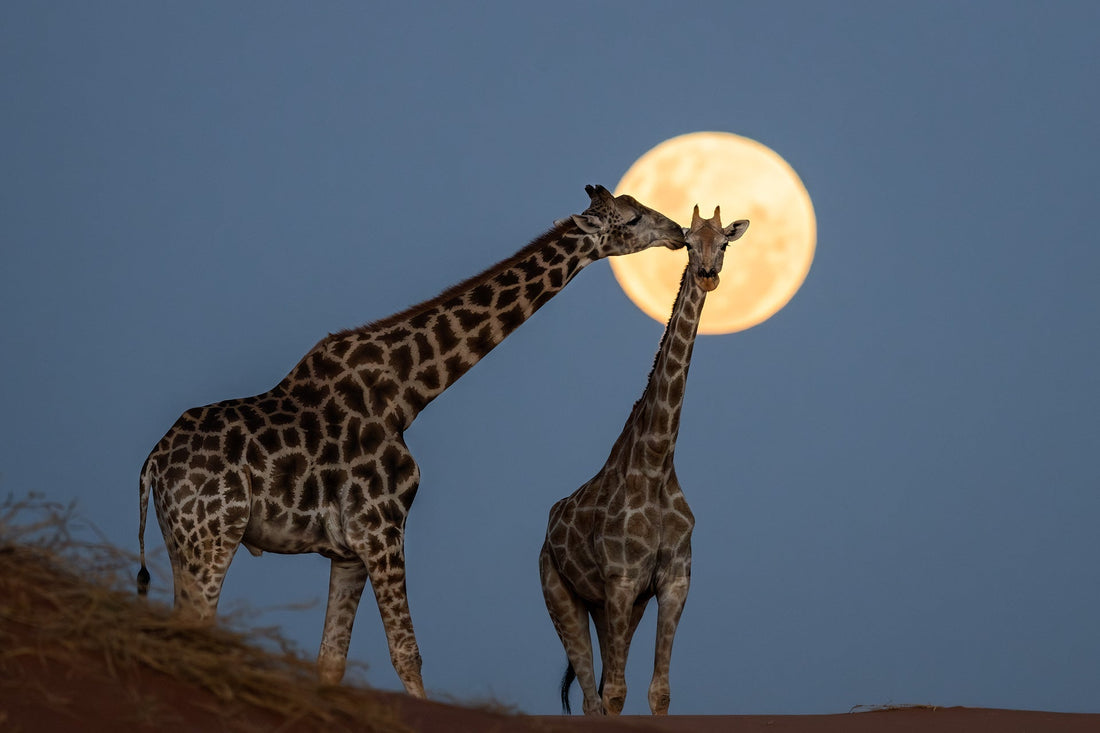
My Wildlife Photography Setup Explained: Gear, Settings, and Field Tips
Kyle GoetschShare
Coming from a landscape photography background, I’ve always approached wildlife a little differently. I’m drawn to the bigger scene, the light, the weather, the land, and how it all ties together with the animal in front of me. I don’t just want a clean portrait on a plain background. I want to capture moments that show where that animal lives, how it moves through its world, and what the atmosphere felt like at that time. Some of my favourite moments are a giraffe beneath a full moon, a tiger framed by a sudden bolt of lightning, or elephants silhouetted against stormy clouds. These are the images that stick with you and that I strive to create. That way of seeing shapes everything about how I photograph wildlife and influences the gear I use and how I set it up in the field.
Today, I shoot with two Nikon mirrorless bodies that complement each other perfectly: the Nikon Z8 and the Nikon Z6III.
Camera and Lens Setup
| Camera Body | Lens | Primary Use | Strengths |
|---|---|---|---|
|
Nikon Z8
|
Nikkor 180–600mm f/5.6–6.3
|
Tight portraits, headshots, distant wildlife
|
High resolution for cropping, strong detail, shallow depth of field for subject isolation
|
| Nikon Z6III | Nikkor 70–200mm f/2.8 | Wider environmental portraits, low-light scenes | Excellent low-light performance, cleaner high ISO, soft and rich rendering at f/2.8 |
Why These Two Bodies Work So Well Together
The Nikon Z8 and z180–600mm combo gives me the reach to isolate subjects and capture fine detail from a distance. It is perfect for close-up portraits or when I want to focus attention entirely on the animal. The Z8’s higher resolution allows for plenty of cropping freedom, which is crucial when the subject is far away or the moment happens too quickly to recompose. The long focal length also provides a beautiful shallow depth of field that separates the animal from its background while maintaining a natural, layered look.
The Nikon Z6III paired with the z70–200mm f/2.8 comes into its own in low light. The camera’s lower megapixel count produces cleaner, more detailed images with less noise in dark conditions, and the fast f/2.8 aperture lets in more light when the day begins or ends. I can’t crop as aggressively with this setup, but the image quality and tonal range in soft, fading light make it more than worth it.
Autofocus Advancements
One of the biggest changes in modern wildlife photography has been autofocus performance. The 3D tracking and animal eye detection in Nikon’s mirrorless system have completely transformed the way I shoot. Both the Z8 and Z6III can lock onto an animal’s eye even through branches, dust, or fast movement.
In the past, keeping focus on a moving subject required constant manual adjustment. Now, the camera intelligently follows the subject across the frame, freeing me to focus on light, composition, and timing. In fast-paced moments like a bird taking flight or a lion charging through grass, that responsiveness is the difference between missing and capturing the shot.
How I Set Up My Cameras
My camera setup is built for speed and instinctive use. Every button and function has a purpose so I can adapt instantly without taking my eye off the viewfinder.
FN1 Button: Single Point AF
For situations where grass or branches interfere with focus. This lets me manually place the focus point exactly on the animal’s eye or face.
FN2 Button: 3D Eye Tracking
Used for fast action or unpredictable movement. One press enables 3D tracking, locking onto the eye and following it smoothly across the frame.
Back Button Focus: Wide Tracking
My main focus mode for most situations. It allows me to quickly compose while the camera maintains continuous focus on the animal anywhere within the frame.
AF-C (Continuous Focus)
Always active so the camera adjusts focus dynamically as the subject moves.
Joystick Speed: Fast
I increase joystick speed to move focus points rapidly across the frame.
Tracking Stickiness: Moderate
Keeps focus responsive but natural. For small, fast birds, I adjust it to “sticky” so the camera holds tighter focus as they dart around.
ISO and Exposure Control
This might be a point of debate among wildlife photographers, but I prefer to shoot with Auto ISO capped at ISO 6400. I pair that with exposure compensation of -0.3 during early or late light and -0.7 in bright conditions.
This gives me flexibility and speed to adapt to any lighting scenario. Light changes constantly in the wild, and using Auto ISO ensures I can focus on the moment rather than constantly adjusting settings. The modern sensors in the Z8 and Z6III handle noise beautifully, so the small trade-off in grain is well worth the agility it provides.
Embracing Weather and Atmosphere
While many photographers prefer the dry season for its predictability, I am drawn to the opposite. The rain, clouds, and storms are what make a scene come alive. Wet conditions create reflections, deepen colour, and add texture that dry environments simply can’t offer.
After a storm, the world transforms. Clouds open up to reveal beams of light, rainbows appear, and animals move differently under soft, shifting light. Puddles turn into mirrors, grass glows with moisture, and the atmosphere feels thick and cinematic. These are the conditions that reveal emotion and drama.
Some of my favourite photographs were taken when most people stayed indoors. Standing in light rain, waiting for the clouds to break, often leads to the most unforgettable scenes. Weather adds story. It becomes part of the narrative rather than a distraction.
Storytelling Through the Environment
For me, wildlife photography is about more than capturing an animal. It is about showing the connection between the animal and its world. The landscape, weather, and light all shape the story of that moment.
I always strive to include the environment in my images. A lion under storm clouds, a bird perched against the last glow of sunset, or an rhino framed by dust and fading light tells more about the essence of the wild than a simple portrait ever could.
My two-camera setup allows me to capture both intimacy and place, the close detail of a subject and the vast beauty of the landscape it calls home. Together, the Z8 with the 180–600mm and the Z6III with the 70–200mm f/2.8 give me everything I need to tell a complete story of the wild.
Some of my most memorable moments have come from embracing that philosophy, photographing giraffes beneath a rainbow after a passing storm, or capturing the soft glow of a full moon rising behind them as the evening light faded. Those moments remind me why I do this. The animal, the light, and the landscape all come together for a brief instant to tell a story that feels timeless.
That is what my setup is built for, not just to photograph wildlife, but to capture the connection between life, light, and the land itself.









